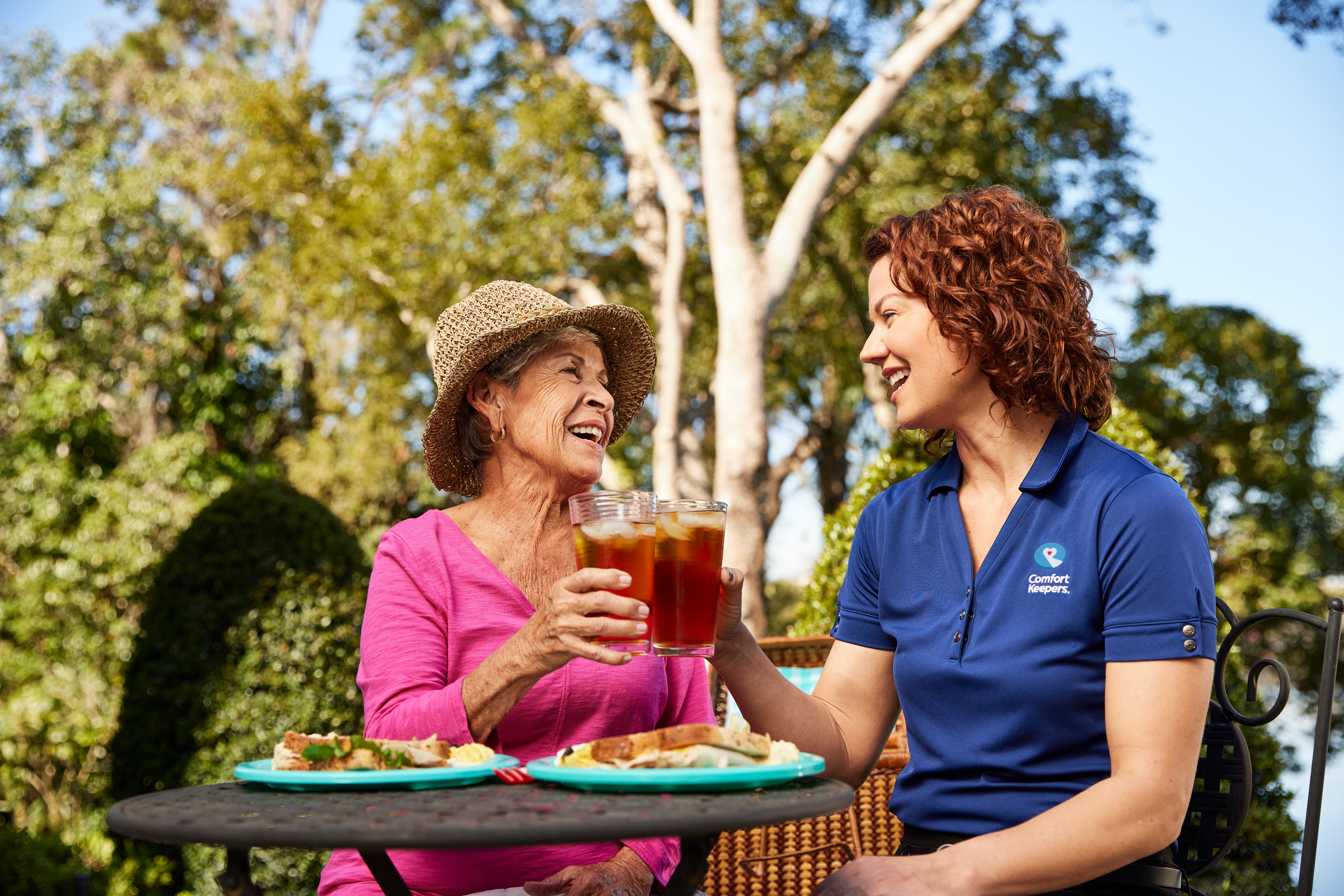Signs of Arthritis Every Toronto Senior Needs To Know
Toronto Senior Health | July 26, 2017
You or your loved one get out of bed and feel just a little too stiff for comfort. The joints in your hand are starting to hurt sometimes. Your big toe is swollen and hurts to the touch. Is this a normal part of aging you wonder? Or something more serious?
Arthritis in Seniors
Over time as we age, many people start to feel pain and stiffness in their bodies. Sometimes their hands, knees or shoulders get sore and are hard to move and may become swollen. They may experience inflammation, redness, heat, pain, and swelling of the tissue lining their joints. In all likelihood these people have arthritis.
There are over 100 different types of arthritis and one in every three people, suffer from some sort of it. It is a disease of the musculoskeletal system, specifically the joints, and it is the main cause of disability among people over fifty-five years of age in industrialized countries. Although there is no cure for arthritis, as a caregiver you should know that there is a lot you can do to minimize its overall painful effects every day in the life of the senior you care for.
The Three Most Common Types Of Arthritis in Seniors
There are several types of arthritis that most commonly affect seniors — osteoarthritis, rheumatoid arthritis, and gout. And while it is possible for some people to have multiple types, osteoarthritis (OA) is the most common of the three types for the elderly to have.
Osteoarthritis involves wear-and-tear damage to the cartilage of the joints — the hard, slick coating on the ends of bones. Enough damage can result in bone grinding directly on bone, which causes pain and restricted movement. This wear and tear can occur over many years, or it can accelerate as a result of injury or infection in a joint.
Many different factors may play a role in whether or not an individual gets OA, including age, obesity, injury or overuse and genetics. OA could be caused by any one or by a combination of any of these factors.
Where Does Osteoarthritis Strike in Seniors?
OA most commonly occurs in the weight-bearing joints of the hips, knees and lower back. It also affects the neck, small finger joints, the base of the thumb and the big toe. OA rarely affects other joints but it sometimes follows if an injury to a joint occurred earlier in life or when continual stress to a joint is involved. OA also develops in later years in joints where bones have been fractured or surgery has occurred.
Ordinarily, OA develops gradually. It may start as soreness or stiffness that seems more a nuisance than a medical concern. The pain that your senior experiences as a result of OA could be moderate or even intermittent and might not interfere with his or her day-to-day activities.
For some people, OA doesn’t ever progress past this early stage. But for others, OA gets to a point where the pain and stiffness make it difficult to walk, climb stairs or sleep. Although rare, sometimes people with OA will experience sudden signs of inflammation such as redness, pain and swelling, known as inflammatory or erosive osteoarthritis.
Signs & Symptoms Of Osteoarthritis in Seniors
How does osteoarthritis affect your senior loved one? Swollen, creaky joints are a hallmark of osteoarthritis. Severe arthritis, particularly if it affects the hands or arms, can make it difficult for your senior to take care of daily tasks. Arthritis of weight-bearing joints can keep him or her from walking comfortably or sitting up straight. In some cases, the joints especially in the hands or feet may become twisted and deformed.
The most common signs and symptoms of osteoarthritis in seniors are:
- Joint soreness after periods of overuse or inactivity.
- Stiffness after periods of rest that goes away quickly when activity resumes.
- Morning stiffness, which usually lasts no more than 30 minutes.
- Pain caused by the weakening of muscles surrounding the joint due to inactivity.
- Joint pain that is less severe in the morning but worsens in the evening after a day’s activity.
- Deterioration of coordination, posture and walking due to pain and stiffness.
As with other chronic health conditions, it’s important that people with arthritis seek medical help and treatment. The most important thing you can do if you suspect your senior has any form of arthritis is to get a proper diagnosis by a doctor. The goals of any treatment plan for OA include controlling pain and other symptoms and improving the ability to function in daily activities.
Most treatment plans will include a combination of exercise, weight control, joint protection, physical and occupational therapy, and in severe cases, when these therapies don’t work, surgery may be considered. The medications used to treat arthritis vary depending on the type and severity of the arthritis.
Treatment Of Arthritis in Seniors
Commonly used arthritis medications used to help reduce pain range anywhere from over the counter analgesics like acetaminophen to narcotics containing oxycodone or hydrocodone.
Medications that reduce both pain and inflammation include over-the-counter NSAIDS, non-steroidal anti-inflammatory drugs like ibuprofen and naproxen and some types of prescription drugs.
There are also various counterirritants, creams and ointments that contain menthol or capsaicin, which when rubbed on the skin over aching joints may help interfere with the transmission of pain signals from the joint itself.
Preventative Tips For Senior Osteoarthritis
But the key factor in living successfully with OA is the senior himself or herself. In addition to, and maybe more important than the medications he or she may take, is making healthy lifestyle changes, managing stress and depression, avoiding joint damage, and balancing rest and activity. Here are some every day tips you as a caregiver can use to encourage your senior to manage arthritis.
- Weight loss.If he or she is obese, losing weight will reduce the stress on your weight-bearing joints. This may increase mobility and limit future joint injury.
- Regular exercise can help keep joints flexible. Swimming or water aerobics is often a good choice because the buoyancy of the water reduces stress on weight-bearing joints.
- Heat and cold.Heating pads or ice packs may help relieve arthritis pain.
- Assistive devices.Using canes, walkers, raised toilet seats and other assistive devices can help protect joints and improve the ability to perform daily tasks.
As always, before embarking on any treatment plan, be sure to check with a doctor. It’s the best way to assure you are doing the right thing in protecting the health of the senior you care for.
Comfort Keepers®’ trained caregivers help provide senior clients with the highest quality of life possible to keep them happy and healthy at home. Our Interactive Caregiving™ provides a system of care that addresses safety, nutrition, mind, body, and activities of daily living (ADLs).
For additional information on Comfort Keepers of Canada® at Toronto or any other Comfort Keepers of Canada® location please visit our home page or call us at 416-663-2930.
References
- ‘Understanding Arthritis – Symptoms’, Osteoarthritis Health Center, WebMD, http://www.webmd.com/osteoarthritis/guide/understanding arthritis
- ‘Arthritis Basics’, Osteoarthritis Health Center, WebMD, http://www.webmd.com/osteoarthritis
- ‘Controlling Your Arthritis’, by the Mayo Clinic Staff, http://www.mayoclinic.com/arthritis
- ‘What is Arthritis? What Causes Arthritis?’, by Christian Nordqvist, Original article date: 24 April 2004. Article updated: 31 October 2012, www.medicalnewstoday.com
Individualized Home Care Options
Long-Term Home Care, 24 Hour Home Care & Short Term Care Options Customized for You






